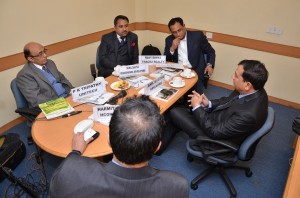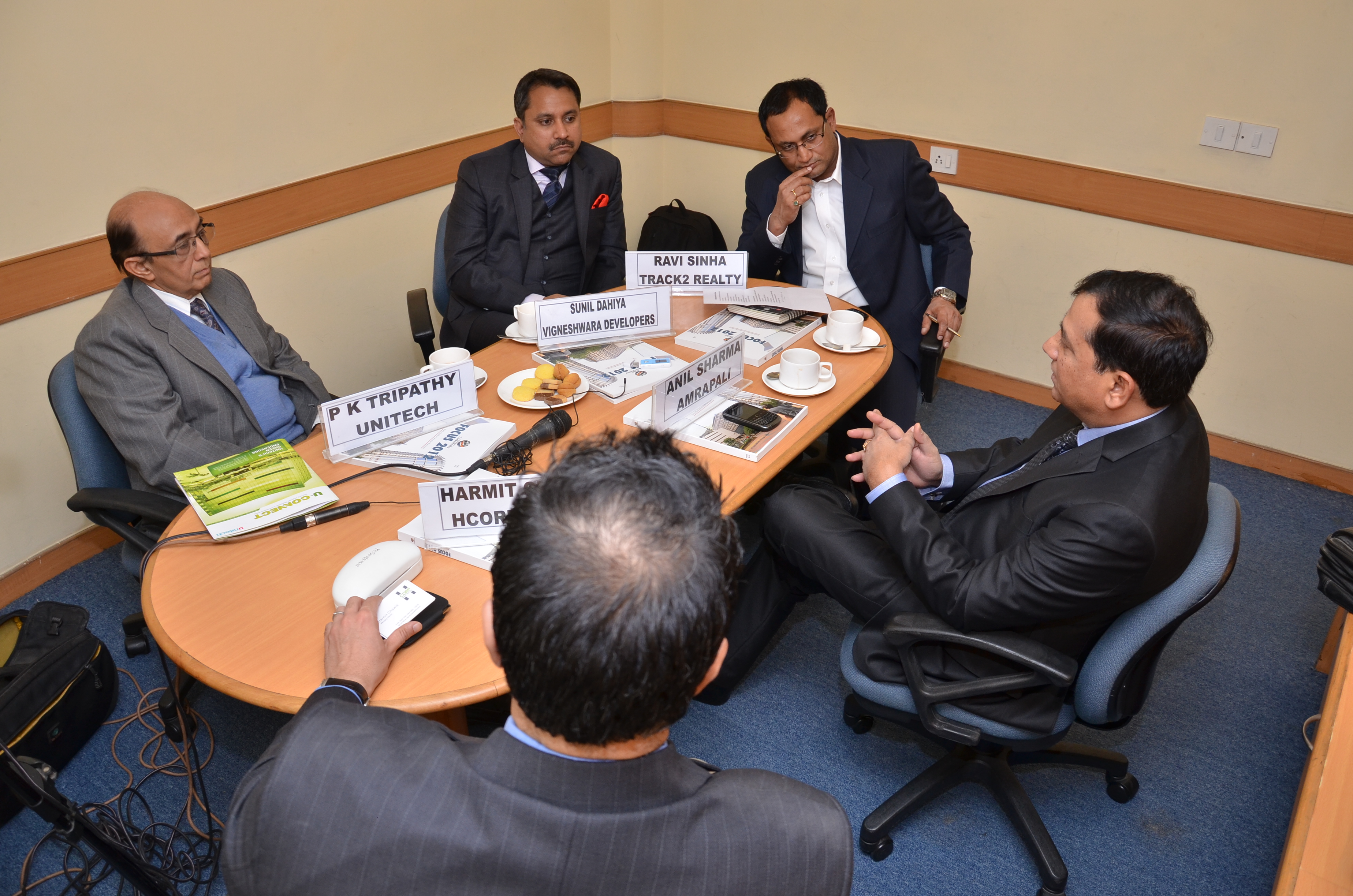 Panelists—Dr Anil Sharma, CMD, Amrapali Group
Panelists—Dr Anil Sharma, CMD, Amrapali Group
Sunil Dahiya—Sr Vice President, NAREDCO & MD Vigneshwara Developers
Harmit Chawla—MD, HCorp Realty
PK Tripathi—President, Unitech
Moderator—Ravi Sinha, CEO & Managing Editor, Track2Realty
Ravi Sinha: In 2013 when most of the PE Funds are maturing, they may not be investing again in the real estate. So, from where will you generate the funds?
Anil Sharma: When there is a demand in the market, there is absolutely no problem of funds, construction etc. The moment you experience huge deficit of demand in the market it is driven by some other factors, it is not driven by real estate alone. Demand is always there because we have got a huge shortage of houses in India, in particular for middle class and lower middle class.
Let us also think about the floating population which is increasing day by day in most of the tier I and tier II cities of India. If the bank reduced half per cent in the housing loan rate, then the demand is coming up.
Ravi Sinha: One of the fundamental reasons why prices have gone unreasonably up is that most of the developers have missed their timelines. Don’t you think 2012 can be called an experimental year from that standpoint? Those developers that have delivered on time, they have sold off their inventory.
Sunil Dahiya: The financial system is so complex in India. Per acre cost of land acquisition is about 40 crore. If you plan a township of 10 acres, then you are looking at Rs. 400 crore. Now, the banker is willing to fund Rs. 1600 crore to the customer but not ready to fund Rs. 400 crore to the developer. You can’t create a hybrid with the banker, saying that you fund Rs. 400 crore, let me deliver this product line. Why are you willing to invest 1600 crore there?
The identity of the loans is different. Housing loans is different and they don’t want to convert into commercial loans. But why the disparity?
Anil Sharma: We have taken the issue with the bankers association that when we apply for credit loan, in that case they do not consider the price of the land on the part of the credit cost. I feel banks also are getting the understanding and the RBI is also a little considerate and now that Finance Minister is a little bit considerate, there is a little hope.
Ravi Sinha: No doubt, we have moved a bit in the right direction in this year. What has been the biggest learning of the year for the sector?
Anil Sharma: See, biggest learning of the sector according to me is that sector must be regulated in a self-regulatory manner. If you regulate yourself, you try to follow the rules and regulations yourself, at least you do not face huge problems.
Ravi Sinha: You are talking about self regulation becoming a norm in the year ahead. But that endeavour has failed. So, what is the learning?
Harmit Chawla: I don’t think there has been any learning. I see a lot of churning and cleansing happening and the sector is in for a very tough time over the next 9-10 months and these events over the next year might expedite the bill and other reforms.
Good or bad is a debatable thing, but yes for the larger good I think real estate will come back to a better standing by the end of 2013.
…to be continued





